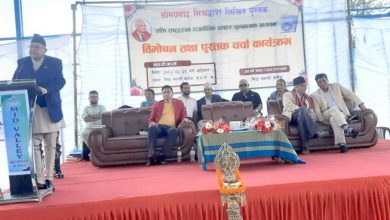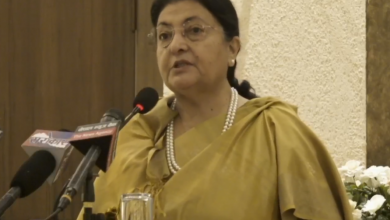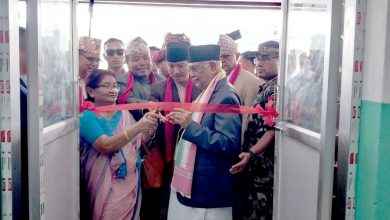Study initiated to confirm possible causes of massive Rasuwa floods
Kathmandu, July 8: The Department of Hydrology and Meteorology has said that it has started a study to confirm the causes behind the massive floods that occurred in the Bhotekoshi river in Rasuwa district on Tuesday morning.
Chief of the Department’s Flood Forecasting Division, Binod Parajuli, said that a study of the satellite images has been initiated to ascertain the possible causes of the flood and the impacts of the flood on the riverbanks. He stated that there are several glacial lakes in the Bhotekoshi water reservoir in China’s Tibet area. As per the initial observation and the details provided by the hydrology and meteorology centres, heavy rain could not be considered a cause of the massive flood in the Bhotekoshi river, he claimed.
The Kyanzing meteorology centre, close to China and the next one in Dhunche showed that the area received sporadic rainfall. The weather radar in Palpa also showed no rainfall in the bordering area of Nepal and China in Rasuwa district. Likewise, the satellite-based rainfall forecasting guidance system of the World Meteorology Organisation also stated that the Bhotekoshi water reservoir site did not receive heavy rain in the past 24 hours, thereby the rain could not be the cause behind the flood.
A flash flood had entered the Bhotekoshi river from Tibet at 3:00 am, and the water level at Timure of Rasuwa had increased by 3.5 meters. According to Parajuli, the riverbank areas in Rasuwa and Trishuli were severely impacted, and the impacts are medium to normal from Nuwakot to the Benighat area in Dhading. Parajuli has urged one and all to exercise precautions, though the flood in the river is receding.
Meanwhile, the ICIMOD also stated that it is too early to determine the exact cause of the flood event in Rasuwa, stating that ‘we can confirm that extreme rainfall was not the cause’. A comprehensive investigation is required, but we need to wait for the monsoon cloud cover to clear first to obtain clear satellite imagery for detailed analysis, it said.
A multidisciplinary team consisting of geologists, glaciologists, hydro-meteorologists and remote sensing analysts should jointly undertake a study to determine the actual cause of the flood, the International Centre for Integrated Mountain Development (ICIMOD) stated. It also said that while a Glacial Lake Outburst Flood (GLOF) or a Landslide Lake Outburst Flood (LLOF) is suspected, there is no conclusive evidence yet.
The ICIMOD’s 2021 inventory shows one glacial lake in the upstream of the Trishuli River in Tibet Autonomous Region of China, categorised as high risk, and needs close monitoring. As cloud cover has hampered optical satellite analysis, we must wait for cloud-free, high-resolution satellite imagery to verify if any of these lakes have breached or if there has been any sudden change in lake volume, according to the ICIMOD.








Comments